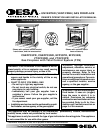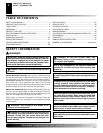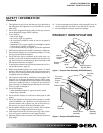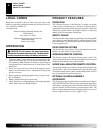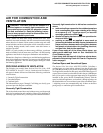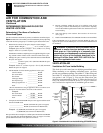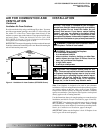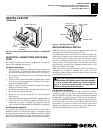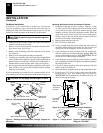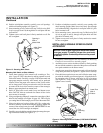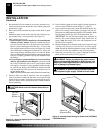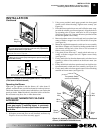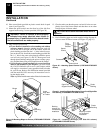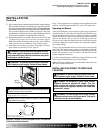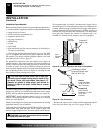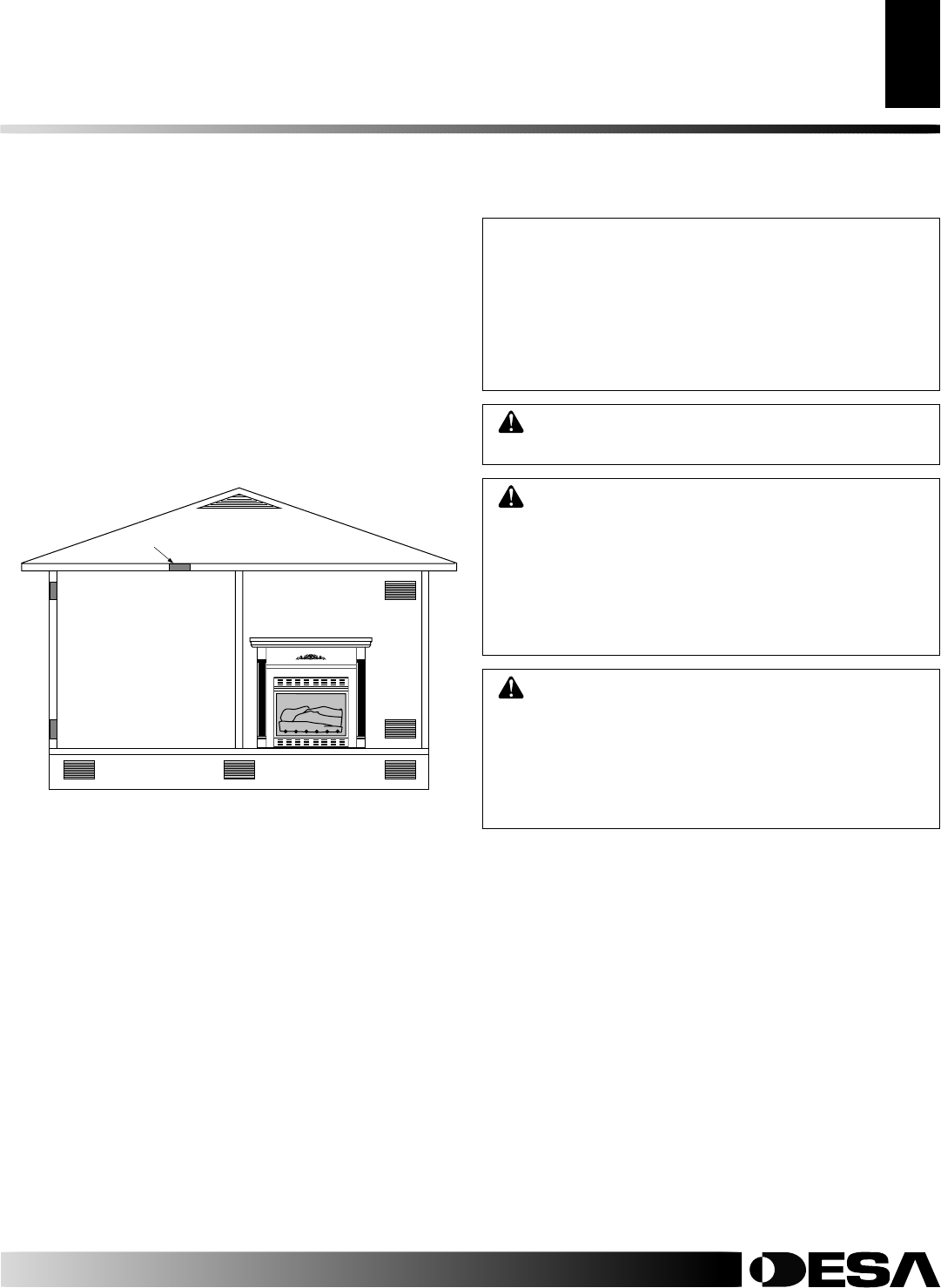
108117
For more information, visit www.desatech.com
For more information, visit www.desatech.com
7
7
AIR FOR COMBUSTION AND VENTILATION
Ventilation Air (Cont.)
INSTALLATION
AIR FOR COMBUSTION AND
VENTILATION
Continued
Figure 4 - Ventilation Air from Outdoors (EFP33PR Shown)
Outlet
Air
Ventilated
Attic
Outlet
Air
Inlet
Air
Inlet Air
Ventilated
Crawl Space
To
Crawl
Space
To Attic
Ventilation Air From Outdoors
Provide extra fresh air by using ventilation grills or ducts. You must
provide two permanent openings: one within 12" of the ceiling and
one within 12" of the floor. Connect these items directly to the
outdoors or spaces open to the outdoors. These spaces include attics
and crawl spaces. Follow the National Fuel Gas Code, ANSI
Z223.1/NFPA 54, Section 5.3, Air for Combustion and Ventilation
for required size of ventilation grills or ducts.
IMPORTANT:
Do not provide openings for inlet or outlet air into attic
if attic has a thermostat-controlled power vent. Heated air entering the
attic will activate the power vent.
INSTALLATION
CAUTION: This fireplace creates warm air cur-
rents. These currents move heat to wall surfaces next
to fireplace. Installing fireplace next to vinyl or cloth
wall coverings or operating fireplace where impuri-
ties (such as, but not limited to, tobacco smoke,
aromatic candles, cleaning fluids, oil or kerosene
lamps, etc.) in the air exist, may discolor walls.
WARNING: A qualified service person must in-
stall fireplace. Follow all local codes.
WARNING: Never install the fireplace
• in a bedroom or bathroom
• in a recreational vehicle
• where curtains, furniture, clothing, or other flam-
mable objects are less than 42 inches from the
front, top, or sides of the fireplace
• in high traffic areas
• in windy or drafty areas
NOTICE: This heater is intended for use as supple-
mental heat. Use this heater along with your primary
heating system. Do not install this heater as your
primary heat source. If you have a central heating
system, you may run system’s circulating blower
while using heater. This will help circulate the heat
throughout the house. In the event of a power outage,
you can use this heater as your primary heat source.
Note:
Your fireplace is designed to be used in zero clearance
installations. Wall or framing material can be placed directly against
any exterior surface on the rear, sides, or top of your fireplace,
except where standoff spacers are integrally attached. If standoff
spacers are attached to your fireplace, these spacers can be placed
directly against wall or framing materials.
Use the dimensions shown for rough openings to create the easiest
installation (see Built-In Fireplace Installation, pages 19 and 20).
IMPORTANT:
Vent-free heaters add moisture to the air. Although
this is beneficial, installing fireplace in rooms without enough
ventilation air may cause mildew to form from too much moisture.
See Air for Combustion and Ventilation, pages 5 through 7.
IMPORTANT:
Make sure the fireplace is level. If fireplace is not
level, log set will not work properly.



